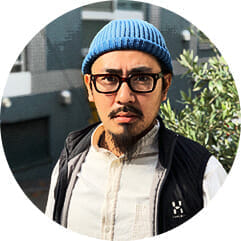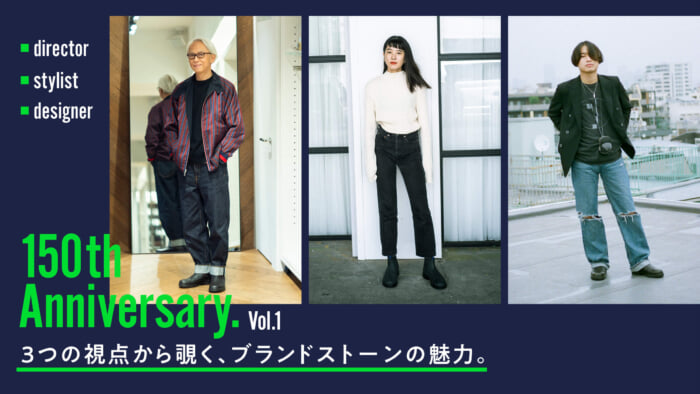Mountain living has been built through repeated successes and failures.
Mr. Homma began living in the mountains because he "wanted to play more. Play" refers to the pleasure of immersing oneself in nature and living in harmony with its cycles.

Woodworking shop behind the house. Work progresses a little each day.
The late Yoshio Tabuchi, a senior mountain dweller, gave me the opportunity to interview him, which had a great impact on me. You could say it was a shock. Mr. Tabuchi was doing everything that I had vaguely thought would be fun. Mr. Tabuchi's house is located at 1,400 meters near Mt. Kinpu, and in any case, there is no waste in his life. Mr. Tabuchi lives by making the most of everything in the surrounding environment. I learned a lot from witnessing this kind of organic circulation. Once you have your own base in the mountains, do you know what you should do first? What I learned from watching Mr. Tabuchi's lifestyle is that you need a composting yard. A place to make soil from fallen leaves and kitchen waste. I started this lifestyle by creating a place for circulation."
If you read the writings of Yoshio Tabuchi, a writer, you will see how he constructed his life with cutting-edge ideas. He researched "Moss" tents, enjoyed fly-fishing, and made Windsor chairs out of cut trees. The phrase "Are you self-sufficient in mind?" in his writings may have the same meaning as Mr. Homma's line, "I want to play more.

Mr. Homma started living in the mountains following in Mr. Tabuchi's footsteps, but it can never be an imitation, because as the environment changes, so do the necessities of life. This is because as the environment changes, so does the necessity of the way of life.
In the field and in everything else, there is a way of doing things that is suited to the land. You can't know that without properly observing nature. That is the best part of this kind of life. It's interesting. When you observe, each day is totally different. Where the wind blows from, what kind of wind, what kind of soil, what kind of trees are growing around you. What kind of animals and insects are there, and I make up my life accordingly. Even in the field, if I think, 'This way of doing things looks bad,' I go in a different direction, and if I feel a response and accelerate the process, it can boost and bear fruit all at once. If it doesn't work out, try a different approach. It may be difficult to pinpoint the cause because of the complex interplay of soil, water, air, microorganisms, and all other factors, but we can find another way. Humans aren't even able to classify the hundreds of millions of microorganisms in 1 mg of soil. But it is true that they are intertwined and influence each other. Essentially, we are part of that complexity, aren't we? We tend to move toward sterility due to the Corona disaster, but it is absolutely impossible to conveniently separate only human beings from this complex world. It is precisely because we live in such an era that I feel it is better to be in touch with the soil.
Mr. Homma creates his own "world" through repeated trial and error in the environment in which he lives. He calls this trial-and-error process, which is like a dialogue with nature, "landscape scoping.
It's a great outdoor activity in my opinion, it's very strenuous, you have to do dangerous things, and there's a lot of creativity involved. It is very creative work, so I am sure that the time will come in the near future when it will be recognized as an outdoor activity by everyone. I even think it should be an Olympic sport, like surfing or bouldering (laughs).
Just as he himself saw Mr. Tabuchi's lifestyle and "felt compelled to do it," he believes that everyone should see Mr. Honma playing and imitate him.

Tips for living in the mountains are actually hard to inform. For example, we don't want to pollute the septic tank, so we wash oily food outside. I feel like it's not good for the soil, but actually bacteria break it down and the soil is revitalized. But if it exceeds the capacity of the soil, it will rot. The saltiness of it all depends on the soil, and you have to observe it to know. It's not a yes or no. Many people want answers in a hurry and have information overload, but that's just stereotyping. It is important to observe, practice, and come up with answers on your own, and that is the most interesting part. I am sure there is no end in sight. The end is when I die. When I think about it, I realize that I will die someday, which is probably why I am doing this endless work. If I think about it that way, I don't want eternal life even if I die (laughs).
Living a finite life as part of nature's seemingly endless activity. Living in the mountains may be a series of questions and answers that make us think about where we are going and where we are going to end up.
Mountain living is fashion.
Even when no one is looking, they are dressed up.
Even in Tokyo, where he was born and raised, there were plenty of places, like the gap, where he could enjoy his freedom. From there, he gradually became uncomfortable and started to take to the trails and ride the waves. Rather than a mountain lodge with rules, he would play with nature in his own way, following the rules of minimizing the burden on nature. As a result of getting into outdoor life in this way, he started "landscape scaping," or mountain living, where he builds his own world.
However, he is not seeking a hermit-like life, cut off from his past and the world at large.

Half of the time, I work in Tokyo. If I could, I would like to stay in the mountains all the time, but that's not possible. This life is also about fashion for me (laughs). I got into it because I love fashion, and I still love it. I live this life because I want fashion to have dreams. I think, "There is a fashion that sincerely goes into the cycle of organic matter and lifestyle, you know (laughs).


Fashion has a very wide range of recipients. The deep pocket of fashion is that you can have such fakes as well (laughs). When I became a stylist 30 years ago, I think there were more dreams in Tokyo. However, the idea that fashion gives us dreams hasn't changed much. So whether it's collections or living like this, for me, everything is fashion. I am still doing fashion. I go out into the field alone, even if no one is watching, wearing clothes that I think are good. Because I'm a stylist (laughs).
Even if the role of a stylist is to suggest the "style" of one's dreams, it is impossible to imitate Homma's lifestyle as it is. This is because each environment is different. However, as Mr. Homma received from Mr. Tabuchi, we should be able to pass on a kind of spirituality that carries on his style. From how to choose long-loved shoes like the "Brand Stone" to the way lumber is cut, this is the foundation of everything he does.

As the sun set and we built a fire with cedar branches and sipped whiskey slowly, Homma-san talked about punk music, which he had recently been deeply impressed by. I'm finally starting to understand the punk philosophy!" He was sitting on his lap, a stray cat with one eye that had been a stray until just a month ago.
Mr. Homma is wearing the "CLASSIC COMFORT," a higher-end series from "Brand Stone. The leather liner and XRD® cushioning material used in the insole make these shoes tougher and more comfortable to wear.
- 1
- 2










